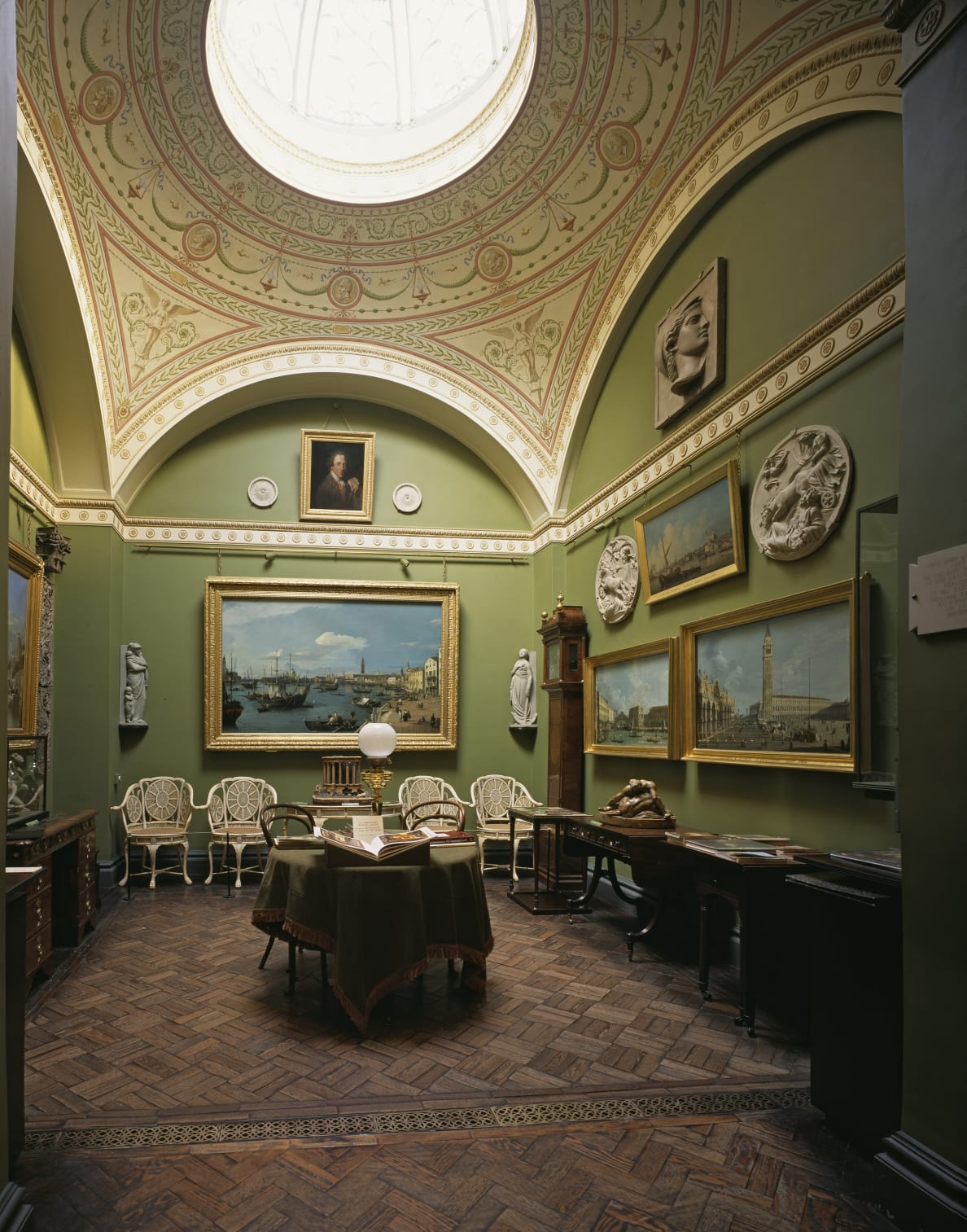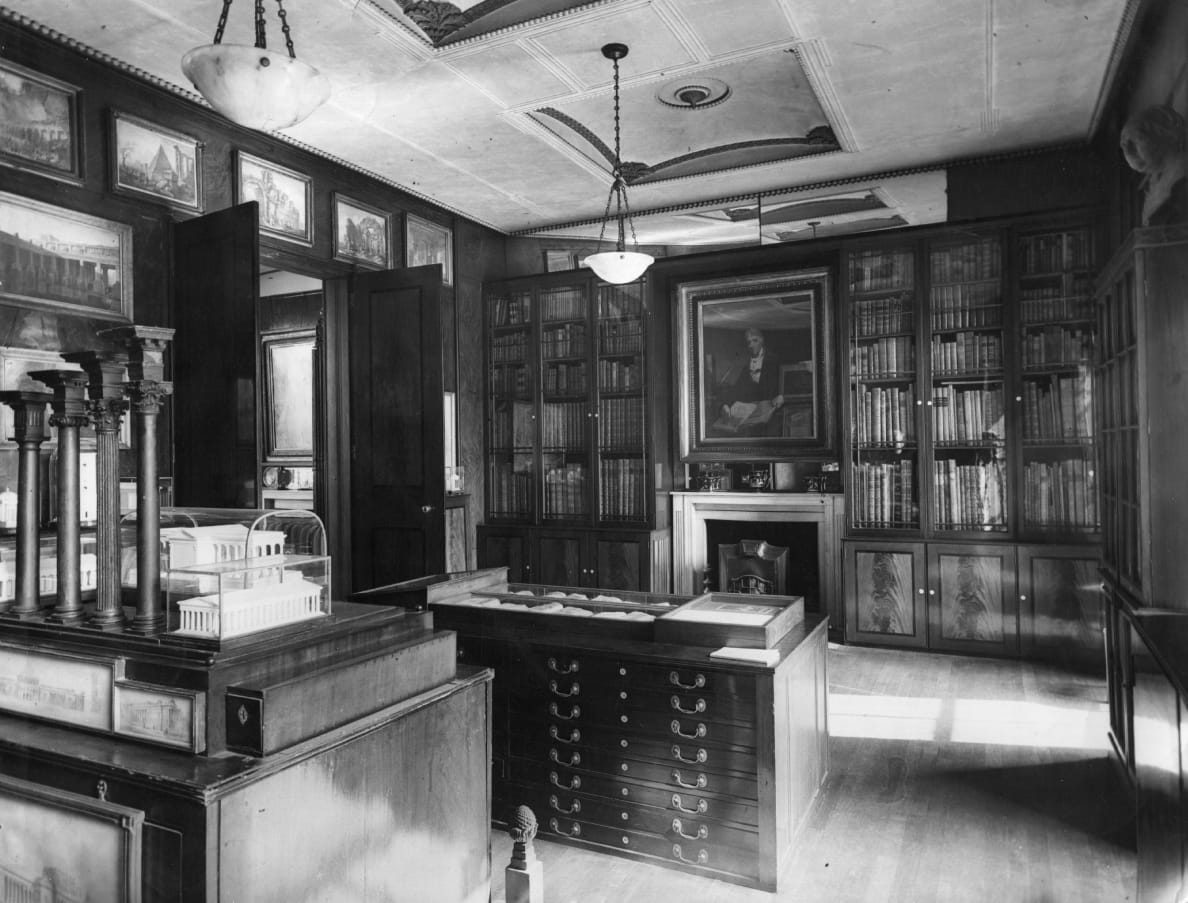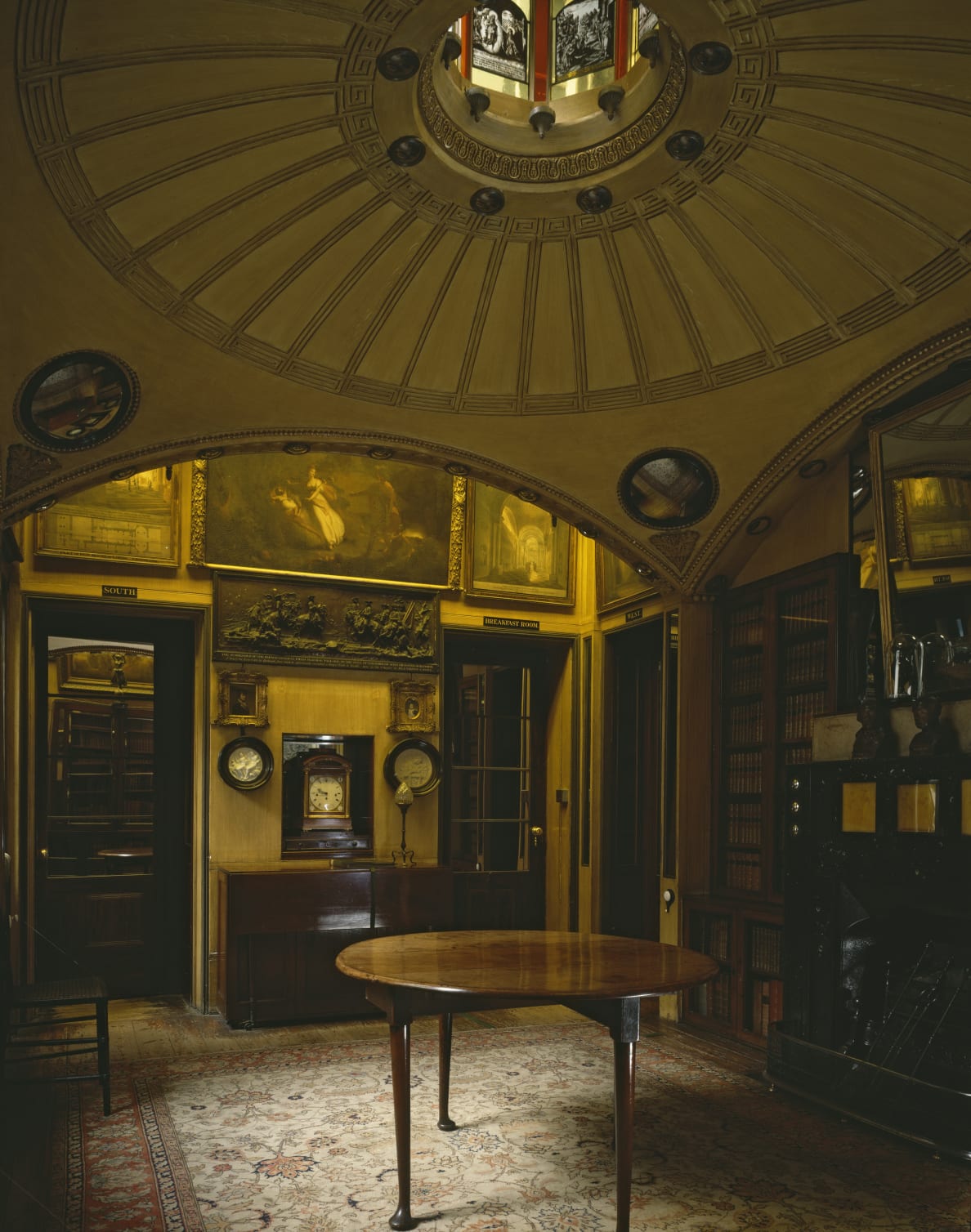This Architect’s House Will Leave You Reeling With Wonder

Gill Allen/Bloomberg/Getty
Sir John Soane was an acclaimed 19th century English architect, but his most delightful building may be his own home, whose optical illusions would make Lewis Carroll blush.
The Bank of England bears little resemblance to the neoclassical complex credited to British architect Sir John Soane (1753-1837). It’s a landmark, sure, but merely one that helps you navigate through the City of London—nothing that begs to be studied as an architectural work of art. That’s because Soane’s original design for the bank—enlargements, renovations, and original designs that occupied him for 30 years—was mostly undone in a disastrous 20th-century renovation that architectural historian Nikolaus Pevsner called “the greatest architectural crime, in the City of London, in the 20th century."
Soane had no say about the ultimate fate of his clients’ buildings, but when it came to his own property, he exerted as much control as he could muster with an eye to posterity.

Sir John Soane Museum, London, United Kingdom, Architect Sir John Soane, Sir John Soane Museum New Picture Room (Including Canaletto Painting).
DENNIS GILBERT/GETTY
Not content to use his last will and testament to protect his London home, which also housed his studio and his vast collection of antiquities, Soane exerted his influence to push through a Private Act of Parliament establishing his house as a museum and ensuring that the property and its contents would be open to the public and remain “as nearly as possible to the state in which he shall leave it.”
Which brings us to one of the most amazing houses in London—or anywhere, for that matter: No. 13 Lincoln’s Inn Fields, in the heart of modern London, on the north side of the U.K. capital’s largest public square.
Unless you are familiar with Soane’s other work—the Downing Street dining rooms at nos. 10 & 11, Banqueting House, Royal Hospital Chelsea, and more churches, estates, and manors than one cares to read about—you might unwittingly pass on the exquisitely incomprehensible Sir John Soane’s Museum at No. 13. An understandable decision, given the museum’s posh but conventional facade—that “as nearly as possible to the state in which he shall leave it” means little or no helpful signage out front. But inside lies a hidden trove of paintings, Soane’s architectural models in his private quarters, and even the sarcophagus of Egyptian Pharaoh Seti I (d. 1279 B.C.).
And it’s all displayed in a house designed to fool, beguile, and delight you from skylight to cellar. The posh row of three houses that he converted to one building serving as the enigmatic architect’s private residence, workspace, and rental properties remain as he left them, under the protection of Sir John Soane’s Museum.

The South Drawing Room on the first floor of Sir John Soane's Museum in London 6th September 1947.
Topical Press Agency/Getty
Soane, the son of a bricklayer was born Sept. 10, 1753 in Goring-on-Thames. After his father’s death, Soane moved to London to attend the Royal Academy, where education was free. Awarded a Grand Tour for his Gold Medal in architecture, he spent two years roaming Europe with particular interest in then remote Sicily and Malta.
His tour also kindled his lifelong passion for collecting art. Over the next half-century he amassed about 45,000 unique pieces: Chinese pottery, ancient and medieval sculpture, architectural remnants, Greek and Roman busts, clocks, furniture, many of which are displayed at the museum. Just looking at the objects he collected kindles sensory overload. But the house where they are placed is also nothing short of magical. The best part of the museum is the home itself. If it feels like an architect’s training ground or laboratory, that’s because much of what Soane designed was first attempted at home.
Given the tight perimeters of row houses, Soane had to build tall, not wide. The result is an illogical and disorienting floor plan. It has the ocular discombobulation of a 19th-century funhouse—but with the taste of an antiquarian who knows the value of his collection. Without any knowledge going in—I couldn’t find a native familiar with the place—there was a sense of missing something. At first glance, it’s a packed museum with no attention to hang style. Sculptural masterpieces and paintings seem to be hung where they fit, especially in the Dome Area where Soane’s bust faces off with the adjacent Apollo Belvedere cast.

Sir John Soane Museum, London, United Kingdom, Architect Sir John Soane, Sir John Soane Museum Breakfast Room (No: 13).
DENNIS GILBERT/Getty
Trick mirrors above bookshelves in the dining room create the mirage of an adjacent room. Elsewhere convex mirrors manipulate room size like fisheye lenses or nautical windows into other worlds. The majesty of the museum is in its ceilings and use of glass. The domed ceiling in the Breakfast Parlor is painted to appear higher but is wide and flat like a diaphragm. The painted glass behind it adds an infinite quality to the space while making it feel cozy. Natural light floods the Breakfast Parlor through the large window overlooking Monument Court.
From top to bottom, the interplay of light off objects to create mood and atmosphere is apparent. The domes throughout the museum bathe masterpieces in a holy glow. As visitors descend into the Crypt and Sepulchral Chamber and Monks Parlour, the area is darker and shadowy in the diminished light that dissipates as it gets closer to the ground. There is enough light to find your way, but not necessarily enough to know what you’re looking at. The basement areas were converted from stores for coal and wine into catacombs and a faux burial ground for Soane’s prized piece, the Egyptian sarcophagus.
The first of the three houses Soane razed and rebuilt was no. 12, where he and his wife, Emily, and their children, John and George, lived after its completion in 1792. There, Soane worked and urged his sons into architecture, a profession both rejected. In 1813, the Soanes took up residence next door at no. 13, where the family enjoyed a much more lavish abode for two years, until Mrs. Soane’s untimely death—a death precipitated by the youngest son George’s betrayal. He had anonymously authored and published two contemptuous articles directly criticizing his father. As far as sons go, George was an utter disappointment, going so far as to attempt to extort money with threats of becoming an actor if his father did not comply. Emily bailed her son out of debtor’s prison and settled a fraud charge to avoid another sentence. But the “death blow” that sent Emily to her untimely grave was the anonymous criticism of her husband’s work. Incidentally, her memory lives on through the subsequent family tomb, which inspired the unmistakable English red telephone booths designed by Giles Gilbert Scott, a long time trustee of Sir John Soane’s Museum.
After his wife’s death, Soane continued to live and work at no. 13, where he added to his growing art and oddities collection. Worth considering is how the late Mrs. Soane would have reacted to the body in the basement had she lived a decade longer—Seti I was discovered in 1817 and offered at 2,000 pounds, a sum too rich even for the British Museum. They turned it down. In 1824, the sarcophagus became Soane’s most expensive and coveted piece. He celebrated by holding three successive evening receptions where guests could ogle his latest acquisition.

Sir John Soane's Museum in London.
Nigel Dickinson/Alamy Stock Photo
The construction of an adjacent home at no. 14 in 1824 expanded the Picture Room and connected nos. 13 & 14 through the back. The Picture Room is an immensely innovative and impressive use of negative space lit by horizontal transom lights that run the length of the ornately carved ceiling. Inventive lighting styles remain part of Soane’s legacy. Another of his fantastic buildings is the Dulwich Picture Gallery, where he installed elongated planes, or roof lanterns, that allow daylight to illuminate large areas and showcase art. Roof lanterns are still essential elements of design in many museums and galleries throughout the world. The museum’s compact 12 x 13 foot Picture Room houses 118 paintings, etchings, and drawings that hang on large hinged panels similar to the pages of a giant book. At intervals throughout the day, the panels are moved to reveal various sets.
The Picture Room houses William Hogarth’s A Rake’s Progress (1732-34), a series of eight sequential paintings that depict a cautionary tale of woe featuring a protagonist eerily similar to the nightmare dilettante that Soane’s son George became. Perhaps George didn’t share the same penchant for syphilitic prostitutes, but he was a trifling spendthrift with a gambling problem who served time in debtors’ prison. Whether or not the father purchased the series because he related to it is speculative, but surely the parallels weren’t lost on him. A Rake’s Progress is part of the permanent collection in the Picture Room along with Hogarth’s The Humors of Election (1754-55). Soane’s personal Hogarth collection renewed interest in the artist and inspired the Museum to acquire more serialized paintings and etchings from other Hogarth collectors throughout the world. And for the first time, A Harlot’s Progress (1732), Marriage A-la Mode (1743-45), The Happy Marriage (post-1745), and more of what Hogarth called his “Modern Moral Subjects” were recently shown together in various rooms and galleries throughout the museum.
The museum’s Hogarth exhibit ended in January, but current and upcoming exhibits and panel discussions can be found at the Sir John Soane Museum website. The Museum is closed Mondays. Admission is free with a reservation, and guided tours of the bedrooms are available for a fee. The museum looks very different from day to night, so a 3 p.m. reservation in the dead of winter gives both perspectives.
